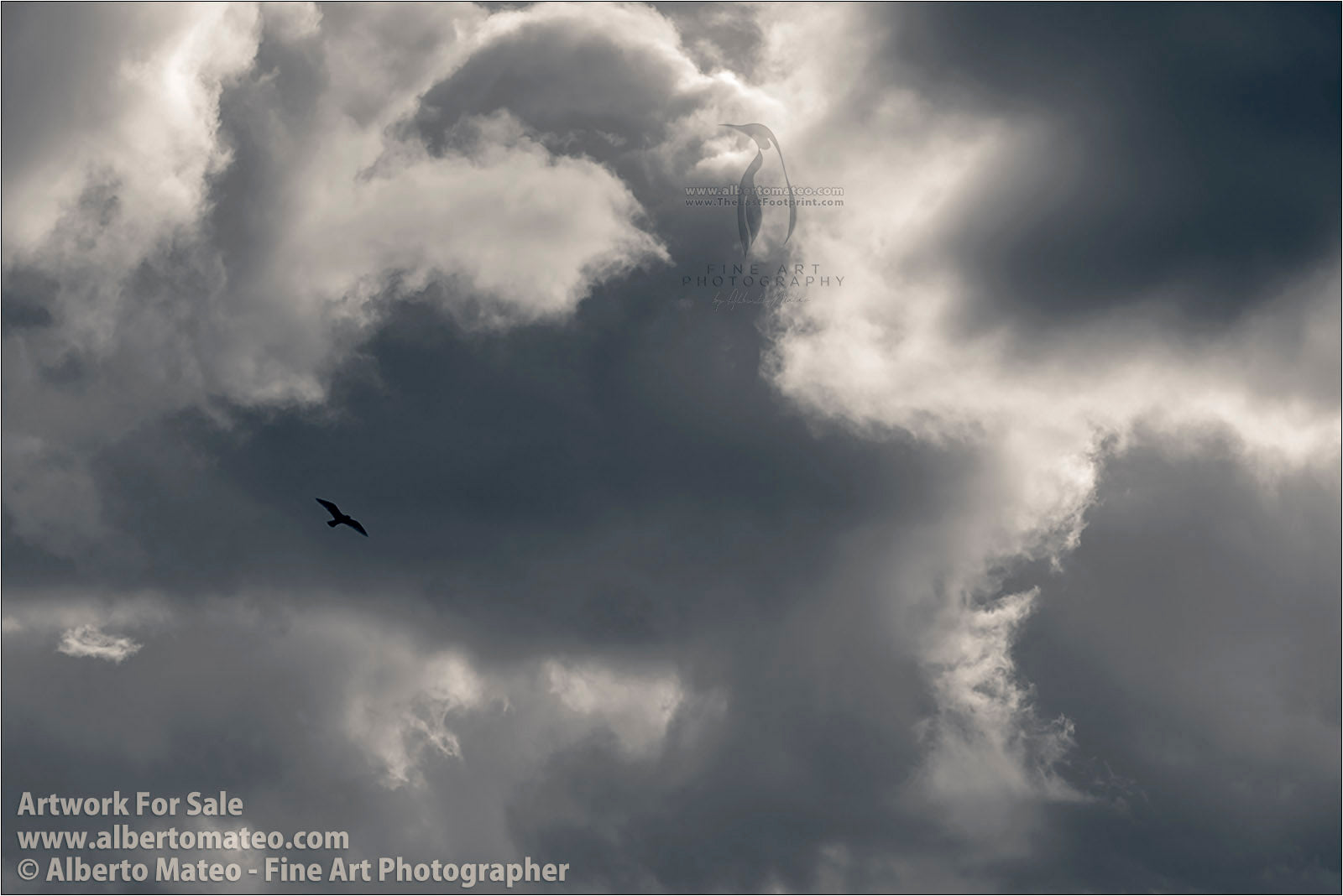Be Open to the Unexpected. Seagull and clouds, Jokulsárlón, Iceland.

[995 Words | Reading time: 4 min 45 seconds]
You must have a plan, no roundabout about this, but a FLEXIBLE PLAN.
When I visit a new location I always have an idea of what I may find, but there are also possibilities I have not planned beforehand. If I am looking for a particular picture and I find a different possibility that may produce a nice image, I usually stop and give priority to what I have in front of my eyes. I cannot count the days in my life that I have gone somewhere to shoot a landscape, have woken up two hours before sunrise, have driven still by night to a far place and have not even taken the camera out of the backpack after finding that there was nothing worthy of being photographed. Many landscape photographs depend more on the weather conditions than on the location itself.
These two landscapes, for instance, taken in Vietnam and Belgium
Flock of ducks, river Meuse, Dinant, Belgium. of ducks, river Meuse, Dinant.
would be boring and worthless without the foggy atmosphere. It is the fog what makes the difference. Experience has taught me to give priority to what I have in front of me than to a possibility that may or may not appear.
The main difference between outdoor and studio photography is CONTROL. In a studio you have control over your models, lighting, costumes, make-up and so on. All this control is great, but in my honest opinion, it has an advantage and a drawback:
Outdoor Photography is, on the other hand, unpredictable. It depends on too many factors: the weather, the location, time of the day or Season. This unpredictability can sometimes be discouraging, but also can take your photography to a higher level. It is a matter of taking advantage of the unplanned possibilities.
When I woke up the day I took this image, the idea I had in mind was to take these two shots at Jokulsárlón:
Ice Formations, Jokulsarlon, Iceland.
When I parked my rented car at the Parking area next to Jokulsárlón I saw these beautiful clouds with the sun lighting them from a proper position. Sunrise had finished two hours before, but the sun in Iceland is low on the horizon for many hours in spring and produces a soft light that differentiates the white shapes and textures of the clouds. The sky I had in front of me had a big tonal range and depth thanks to the position of the sun. I took a reading to take care that the highlights (the holes in the clouds that allowed the sunlight to pass) were not blocked. Detail-less highlights look awful in print.
Clouds configured a wonderful background, but I needed an actor. Clouds alone were too abstract. After spending some time with my camera in hand a lonely seagull appeared and begun to fly in circles. I did not mount the Nikon D800 body on the tripod as it would have made too difficult to focus on the bird. The head I use, the Gitzo 1372M Magnesium Alloy is a three-axis one. You can adjust each axis independently, which is great for landscape, but not for photographing fast moving objects. A ball head is more useful for this use. You have less control, it is more difficult to get the camera body perfectly leveled, but you can move all the camera-lens set fast with just one movement of your hand. So I simply changed my shutter speed to 1/300 and shot handheld.
The black shilouette of the seagull adds meaning to the image and sets the scale of the whole photograph. Without it, the clouds look too empty.
Tone and shape of the clouds have meaning themselves. If we compare the clouds in this image with the ones of my previous post we can see that these are ‘inoffensive’ clouds. They do not announce a storm that is coming. In fact, the sun emerged and pieces of deep blue sky could be seen among the clouds a bit later, while I was searching for appealing iceberg shapes to photograph. But the dark clouds of my previous post tell us that the relatively quiet situation I was in was not going to last long. A big storm fell some minutes later everywhere around.
I always have a plan and try to anticipate what I am going to find in advance, in special when I am the first time in a new location, but being open to new possibilities that were un-planed have given me many images I did not think I was going to get.
Good opportunities do not arise every-day, so I try to be ready to catch what I may find.
Related Images: Other completely unplanned photographs I have shot throughout the years…
EXIF DATA:
Camera Model: Nikon D800
Lens: Nikon 80-200 AF used at 80mm
SETTINGS: Aperture: f16 | Shutter Speed: 1/320 seconds | ISO: 100
LIST OF USED GEAR
Tripod: None, handheld.
Backpack: LowePro with rain cover (absolutely needed in Iceland)
Filter: B+W 77mm Graduated 0.6 Neutral Density Filter 2 points, soft transition
Memory Card: Sandisk SD Extreme 64Gb
NEXT SCHEDULED POST: Breaking Waves in Gale. Series of Five Photographs.
Have you liked this post? If so you can SUBSCRIBE to The Last Footprint to receive the last updates, learn photography and get travel tips. It is FREE and you can unsubscribe whenever you want.
This image is available as an Open Edition Fine Art Print. Click here to visit the shop.


0 comments